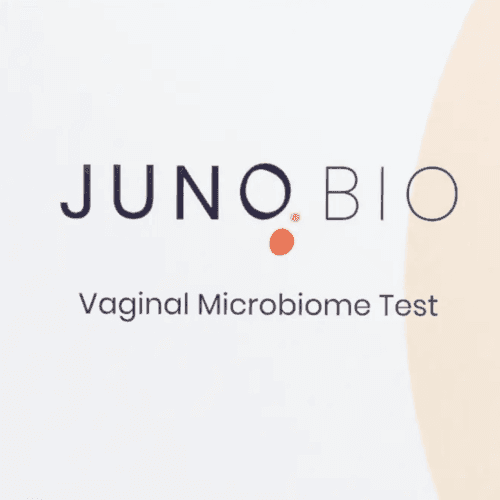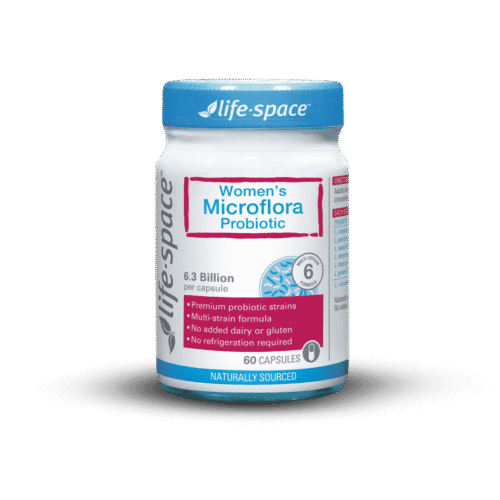Aerobic vaginitis (AV) is often confused with other vaginal infections, and misdiagnosis can leave you stuck in a cycle of symptoms that just won’t go away. From yellow discharge to rawness and irritation, AV causes a very specific kind of discomfort, and understanding the signs can help you get the right treatment sooner.
Let’s take a deep dive into what makes AV unique, how to spot it, and why it’s so often overlooked in both mainstream and specialist clinics.
1. What are the symptoms of aerobic vaginitis?
Aerobic vaginitis symptoms often look like a cross between yeast, bacterial vaginosis (BV) and even a urinary tract infection (UTI) – but with one big difference: inflammation.
AV is a condition where oxygen-loving bacteria like Escherichia coli, Staphylococcus aureus, Streptococcus agalactiae, and Enterococcus faecalis take over the vaginal environment. These bacteria are primarily gut commensals and not typical residents of a healthy vaginal microbiome.
However, these microbes may transiently appear in the vagina and become pathogenic under the right conditions. Their presence triggers your immune system to respond with redness, swelling, burning, and sometimes even small sores.
Because AV is inflammatory, you may experience symptoms that feel more intense than other types of vaginitis. Many people describe the pain as sharp, hot, or deeply uncomfortable.
If you’re dealing with discharge, odour, and pain that’s not improving with typical BV or candida treatments, it’s time to consider AV as a potential culprit.
2. How do you know if you have AV?
Most people find out about AV after failed BV or yeast treatments. Sound familiar? It’s often not until someone finds our clinic that they hear the words ‘aerobic vaginitis’ for the first time.
Diagnosing AV usually requires:
- A vaginal swab and microscopy, or
- A comprehensive PCR/NGS at-home vaginal microbiome test like Juno
A skilled practitioner will look for:
- Symptoms improve during menstrual bleeding
- pH can be high (over 4.5, but is often within range, which can be confusing to practitioners)
- Loss of protective lactobacilli (especially Lactobacillus crispatus)
- Presence of aerobic bacteria
- Immature epithelial cells
- White blood cells (a marker of inflammation)
If your symptoms have been brushed off or mislabelled as ‘just BV’, getting a more sensitive and thorough test can make all the difference.
3. AV warning signs that you shouldn’t ignore
We’ve written a full post on aerobic vaginitis symptoms, but here’s the shortlist of the most common AV signs:
- Yellow or greenish discharge (often thick, sometimes sticky)
- Burning, itching, or rawness inside the vagina
- Vaginal dryness or tightness, especially postmenopause
- Pain during or after sex
- Red, inflamed vulval skin
- Tiny abrasions or bleeding
- A foul, sometimes sweet or musty odour
Inflammation is what makes AV so uncomfortable, and why treatment has to include both microbial and anti-inflammatory support.
4. Can aerobic vaginitis cause pain?
Yes – and this is one of the clearest differences between AV and other types of vaginitis.
AV pain can feel:
- Like sandpaper on the vaginal wall
- Deep and burning
- Sharp and raw during penetration
- Like you’ve had sex after shaving dry
Pain and burning is often one of the first symptoms people notice, but unfortunately, it’s also what gets misdiagnosed. AV can mimic a UTI or even vulvodynia in some cases, especially when the infection has become chronic or recurring.
Hot tip!
At the My Vagina specialist clinic, we regularly see patients who develop AV after their partner has moved from anal to vaginal sex without washing thoroughly. Anal bacteria like E. coli are major players in AV. Always wash hands, toys and penises before switching from the anus to the vagina – it’s not optional.5. What does aerobic vaginitis discharge look like?
Aerobic vaginitis discharge tends to be:
- Yellow or yellow-green
- Sticky or slightly frothy
- Thicker than BV discharge
- Foul-smelling – not necessarily fishy like BV, but unpleasant
- May contain streaks of blood from inflamed tissue
This discharge may worsen after sex or at certain times in your cycle, particularly post-ovulation when oestrogen drops and vaginal immunity changes. The vagina can feel very dry.
AV discharge is different from BV (which is usually greyish and more watery), and from yeast (which often appears as white curd-like clumps or flecks).
Keep in mind: discharge alone can’t diagnose AV. You’ll need proper testing to understand exactly what’s going on.
6. AV signs vs other infections
Yeast
- White, thick discharge or white flecks
- Extreme itching
- Usually, no unpleasant odour
- Caused by Candida albicans
BV
- Thin, grey-white discharge
- Strong fishy smell
- Often, no pain or visible inflammation
- Caused by anaerobic bacteria like Gardnerella vaginalis
AV
- Yellowish discharge
- Burning, rawness, inflammation, with a feeling of dryness
- Often foul-smelling
- Caused by aerobic bacteria like E. coli and Staphylococcus
Understanding these differences is essential for choosing the right treatment. Aerobic vaginitis needs a very specific plan, not just a tube of yeast infection cream or a round of BV antibiotics.
7. How AV gets missed (and why it matters)
Because AV symptoms can mimic multiple conditions, many people are treated for the wrong problem over and over. And when AV isn’t addressed properly, it can lead to:
- Ongoing pain
- Sexual dysfunction
- Recurrent infections
- Thinning of the vaginal lining
- Poor outcomes in pregnancy
One of the big problems with AV is that many standard treatments – especially long courses of clindamycin – aren’t very effective, and can cause other microbial imbalances.
The My Vagina specialist clinic uses a multi-pronged approach. You need to clear the infection, restore protective flora like Lactobacillus, reduce inflammation, and support mucosal healing.
8. Our treatment approach at My Vagina
Here’s what we typically use for AV treatment:
- Aunt Vadge’s AV Rescue – targets aerobic microbes while sparing Lactobacillus
- V-Spot Probiotic – restores protective flora like Lactobacillus crispatus
- Oral AV Herbal Formula – supports immune function and system-wide microbial balance
- Fluomizin (dequalinium chloride) – a non-antibiotic antimicrobial
- Accurate Vaginal pH Strips – to track progress at home
We treat AV as a whole-body issue. If you’ve had AV more than once, it’s best to make an appointment so we can also thoroughly assess your gut, oral, and immune health to make sure the root cause is being addressed.
AV can take weeks to resolve – and months to fully heal – but with the right care, it’s absolutely treatable.
9. When to seek help
If you’re still not sure whether you’re dealing with AV, BV, or something else entirely, don’t guess. Visit your doctor, order a test or consult with one of our AV-savvy practitioners.
Here’s when you should reach out:
- You’ve had more than one treatment for BV or thrush and it hasn’t helped
- You’re experiencing inflammatory vaginitis symptoms like pain, rawness, or yellow discharge
- Sex is painful, and your discharge smells off
- You feel like you’re not being taken seriously by your current provider or they have exhausted their treatment options
We’ll help you figure out what’s going on, get the right testing, and treat the real problem, not just the surface symptoms.
Don’t ignore the signs
Aerobic vaginitis is real, and it’s more common than most people think. It’s not just another vaginitis – it’s an inflammatory condition caused by the wrong microbes in the wrong place.
Whether you’re dealing with yellow aerobic vaginitis discharge, burning pain, or any other aerobic vaginitis symptoms, the sooner you identify the issue, the better the outcome.
If you’ve spotted one or more AV warning signs or think you may be experiencing inflammatory vaginitis, don’t wait. Get tested and get treated properly.








